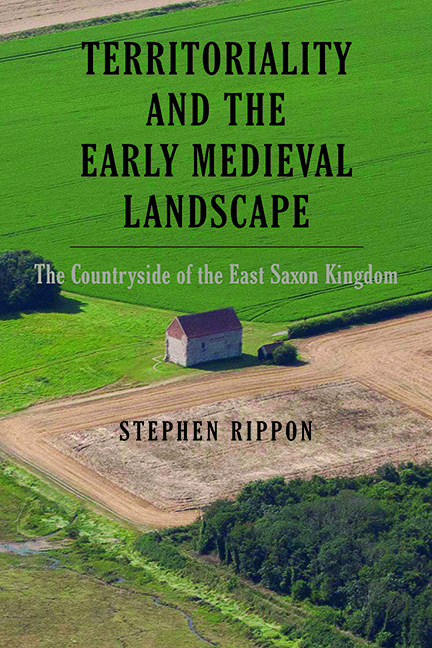Book contents
- Frontmatter
- Dedication
- Contents
- List of Illustrations
- List of tables
- List of Abbreviations
- Acknowledgements
- Glossary
- Preface
- Part I Background
- Part II The Early Folk Territories
- Part III Discussion and Analysis
- Appendix 1 Domesday Population Densities Across the ‘Rochford Peninsula’ Early Folk Territory
- Appendix 2 Sites Used in the Analysis of Animal Bone Assemblages
- Appendix 3 Sites Used in the Analysis of Charred Cereal Assemblages
- Bibliography
- Index
- Garden and Landscape History
Chapter 12 - Agriculture and Resource Management
Published online by Cambridge University Press: 26 May 2022
- Frontmatter
- Dedication
- Contents
- List of Illustrations
- List of tables
- List of Abbreviations
- Acknowledgements
- Glossary
- Preface
- Part I Background
- Part II The Early Folk Territories
- Part III Discussion and Analysis
- Appendix 1 Domesday Population Densities Across the ‘Rochford Peninsula’ Early Folk Territory
- Appendix 2 Sites Used in the Analysis of Animal Bone Assemblages
- Appendix 3 Sites Used in the Analysis of Charred Cereal Assemblages
- Bibliography
- Index
- Garden and Landscape History
Summary
HAVING EXPLORED THE TERRITORIAL units into which the early medieval landscape was divided, this chapter will consider patterns of land use. We have seen how the heartlands of early folk territories consistently lay within lowland valleys with their boundaries running through areas of the landscape with the lowest agricultural potential (most notably poorly drained soils of the interfluvial watersheds). The geology, topography and soils of these lowland valleys were not, however, uniform and this chapter will explore the different agricultural regimes across these various pays (building upon initial observations in Rippon 2012a and Rippon et al. 2014). Discussion focuses on the information that faunal assemblages and charred cereals tell us about animal and crop husbandry and, as sample sizes from individual pays are often small, this study will embrace the whole of eastern England in order to increase the amount of data.
AN AGRARIAN ECONOMY
The late fourth and early fifth centuries saw a dramatic transformation of the economy in Britain as the complexities of the Roman period – including large-scale manufacturing industry, a hierarchy of market centres, centralised taxation and the demands of a large standing army – was replaced by an economy that was almost wholly subsistence based. Large-scale industries collapsed, the army was withdrawn, coinage no longer flowed into Britain (and, crucially, unlike in earlier periods, it was not replaced by local counterfeiting) and towns were abandoned. In eastern Britain there is very little evidence for continued trade with the Roman world, and major ports such as London soon became derelict.
Against this background of economic decline it is easy to understand why the traditional view is that the countryside was also deserted as the British population migrated west in the face of invasion by Angles and Saxons. In reality, however, the situation was more complex. The Rural Settlement of Roman Britain Project has recently shown that the countryside across most of Roman Britain was changing from as early as the third century, with a marked decline in the number of settlements in regions such as the South and East (Smith et al. 2016, 404–8). There is, however, growing evidence that no lowland region saw large-scale woodland regeneration at the end of the Roman period, suggesting that farming continued albeit with a partial shift from arable to pasture in most lowland regions (Rippon et al. 2015).
- Type
- Chapter
- Information
- Territoriality and the Early Medieval LandscapeThe Countryside of the East Saxon Kingdom, pp. 241 - 276Publisher: Boydell & BrewerPrint publication year: 2022



